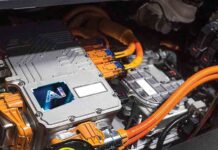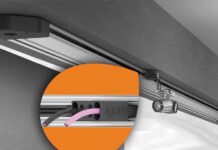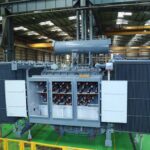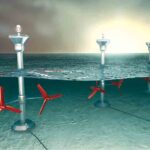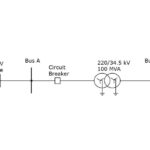
The transmission and distribution sector in India is undergoing a significant transformation, influenced by the need for enhanced efficiency, reliability, safety, and environmental sustainability. A key advancement in this transition is the widespread adoption of XLPE (Cross-Linked Polyethylene) cables.
Designed to replace conventional oil-filled and PVC cables, XLPE cables are finding widespread application in India’s urban, rural, and renewable energy projects. This article delves into what makes XLPE a revolutionary solution, its manufacturing process, design advantages, cost-effectiveness, and expanding use both domestically and globally.
What is XLPE Cable?
XLPE is a thermoset polymer insulation used in medium and high-voltage cables. Unlike standard polyethylene, XLPE is chemically cross-linked, which enhances its structural stability, heat resistance, and dielectric properties.
How are XLPE Cables Manufactured?
The production of XLPE-insulated cables is a controlled, precision-intensive process involving:
- Triple-layer extrusion of conductor screen, insulation, and insulation screen
- Cross-linking via chemical (peroxide or silane) or physical (irradiation) methods
- Degassing and dry curing to eliminate residual by-products and ensure uniformity
This process guarantees high dielectric strength, mechanical integrity, and long-term performance.

Construction of XLPE Cables
- Conductor: The central core of the cable made from either aluminium or copper, typically stranded to provide flexibility and high conductivity. It is the main pathway through which the electric current flows.
- Conductor Screen: A semi-conductive layer applied over the conductor to smooth out the surface irregularities and minimise the electrical stress between the conductor and the insulation. It ensures a uniform electric field.

- XLPE Insulation (Cross-Linked Polyethylene): This is the primary insulating material that surrounds the conductor. It provides high dielectric strength, thermal resistance, and mechanical toughness. The cross-linking of polyethylene improves heat resistance and aging properties, making it suitable for high voltage applications.
- Insulation Screen: Another semi-conductive layer applied over the XLPE insulation. It helps in maintaining a uniform electric field and reduces the possibility of partial discharges by eliminating air gaps between insulation and screen. It also serves as a bonding layer with the metallic screen.
- Metallic Screen (Shield): This layer, usually made of copper tape or copper wires, surrounds the insulation screen. It provides a path for fault current to flow safely to the ground and shields the cable from electromagnetic interference. It also helps in detecting insulation failures.
- Inner Sheath (Bedding): An optional layer placed over the metallic screen. It separates the core components from the mechanical protection layers and provides bedding for the armour. Made of PVC or similar material.
- Armour: A layer of galvanised steel wires or steel tape that provides mechanical protection to the cable, especially in direct burial or harsh environments. It prevents damage due to external mechanical forces like digging or crushing.
- Outer Sheath (Jacket): The final protective layer made of materials like PVC, HDPE, or LSZH (Low Smoke Zero Halogen). It protects the inner parts of the cable from moisture, chemicals, UV radiation, and mechanical wear and tear.
Cable Accessories for XLPE Installations
- Cable Sealing End (CSE): A termination device for connecting cables to GIS, transformers, or overhead lines. It maintains insulation integrity and prevents environmental ingress.
- Termination Box: Enclosure that houses the cable terminations, protects them from dust, moisture, and allows safe mechanical mounting and electrical connections.
- Bonding Cable: A grounding conductor connecting the cable screen or armour to earth. Types of bonding include:
- Single-Point Bonding: For short cable lengths, eliminates sheath currents.
- Double-Point Bonding: Grounds at both ends; more protection but can induce circulating currents.
- Cross Bonding: For long EHV cable sections; reduces induced voltage and losses.
Typical Installation Example: 132kV Substation
In a 132 kV substation:
- XLPE cable enters via cable trench
- Terminated at cable sealing end on a structure
- Termination box houses the bonding cable and earthing connection
- Stress cone within sealing end controls electric field distribution
- Conductor connects to transformer bushing or GIS
This setup ensures safe, efficient, and reliable high-voltage power transmission.
Adoption of XLPE in India
India is rapidly transitioning to XLPE technology in key segments:
- Urban underground distribution systems (11kV to 220kV)
- Smart cities and metro rail networks
- Renewable energy evacuation corridors
- High-rise commercial and industrial facilities
Leading states such as Maharashtra, Delhi, Tamil Nadu, and Gujarat have spearheaded large-scale XLPE deployment projects.
Recent Developments and Research
- Nano-enhanced XLPE: Boosts thermal conductivity and insulation stability
- Sensor-embedded Smart Cables: Enable real-time condition monitoring
- Academic Studies:
– IIT Madras and CPRI (2023–2024) found XLPE cables reduce line losses by up to 30%
– Showed superior durability under humid/coastal Indian conditions
- Local Manufacturing Growth: Indian companies like KEI, Polycab, Universal, and RPG now offer 3-core 220kV XLPE cables

Conclusion
XLPE cables are redefining India’s energy transmission standards. Their superior thermal, electrical, and mechanical properties – combined with their environmental advantages and economic feasibility – make them the preferred solution for modern power networks.
As India intensifies efforts toward smart infrastructure, renewable integration, and underground cabling, XLPE cables will remain at the heart of this transformation – serving as the modern artery of India’s electric future.

Er. Anmol Maharana is a Deputy Manager (Electrical) at Odisha Power Transmission Corporation Limited.

Dr. Sarat Kumar Sahoo is a Professor at the Department of Electrical Engineering, Parala Maharaja Engineering College, Berhampur, Odisha.





